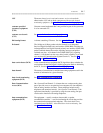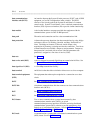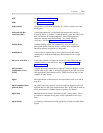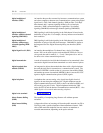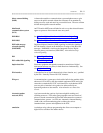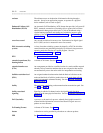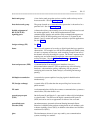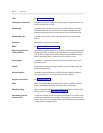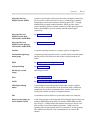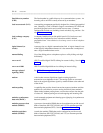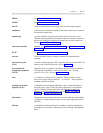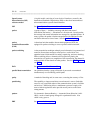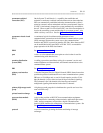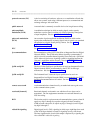GLOSSARY GL-15
_ ______________________________________________________________________________________
_ ______________________________________________________________________________________
_ ______________________________________________________________________________________
Integrated Services
Digital Network (ISDN)
A public or private network that provides end-to-end digital connectivity
for all services to which users have access by a limited set of standard
multipurpose user-network interfaces defined by the CCITT. Through
internationally accepted standard interfaces, ISDN provides digital
circuit-switched or packet-switched connectivity within the network and
links to other ISDNs to provide national and international digital
connectivity.
Integrated Services
Digital Network basic
rate interface (ISDN-BRI)
See basic rate interface.
Integrated Services
Digital Network primary
rate interface (ISDN-PRI)
See primary rate interface.
interface A common boundary between two systems or pieces of equipment.
intermediate high-usage
trunk group
A high-usage trunk group that receives overflow traffic from other trunks
and may receive first-route call traffic and/or switched overflow call
traffic.
ISDN See Integrated Services Digital Network.
keyboard dialing See terminal dialing.
kilo bits per second
(kbps)
1000 bits per second.
LAN See local area network.
LAPD See link-access procedure on the D-channel.
LED (light-emitting
diode)
A semiconductor device that produces light when voltage is applied.
LEDs provide a visual indication of the operational status of hardware
components, the results of maintenance tests, and the alarm status of
circuit packs, and the activation of telephone features.
link A transmitter-receiver channel or system that connects two locations.
link-access procedure on
the D-channel (LAPD)
A link-layer protocol on the Integrated Services Digital Network basic rate
interface (ISDN-BRI) and primary rate interface (ISDN-PRI) data-link
layer (level 2). LAPD provides data transfer between two devices, and
error and flow control on multiple logical links. LAPD is used for
signaling and low-speed packet data (X.25 and mode 3) on the signaling
(D-) channel and for mode-3 data communications on a bearer (B-)
channel.



